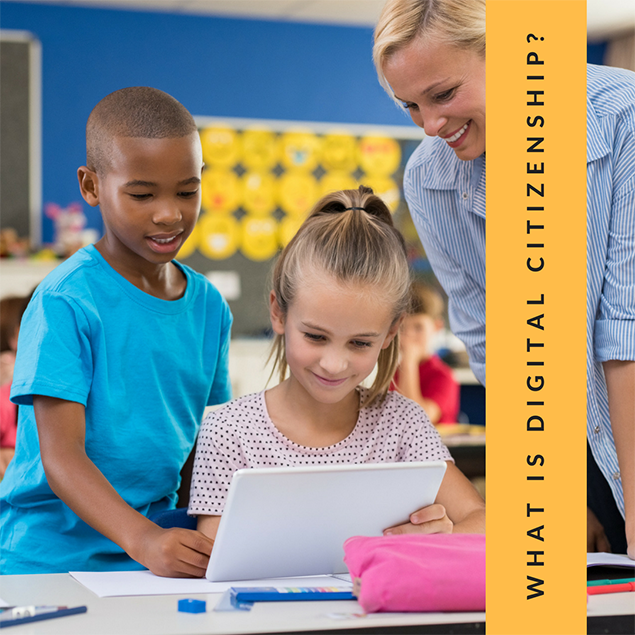What is Digital Citizenship?
Posted by Network Support · Leave a Comment
Technology is an integral part of our students’ lives. That said, it is essential to teach students to be good digital citizens and use technology responsibly.
Digital citizenship is the acceptance and adherence of norms outlining appropriate behavior and responsible use of technology and participation in the virtual world. “Digital citizens” are individuals who are skilled and knowledgeable about technology and its application in communication, collaboration and creating digital content. This describes majority of students in a class.
Teaching Digital Citizenship in the Classroom
As students’ use of technology starts at a young age, it is important to implement early education on digital citizenship. This includes teaching students about:
Digital Etiquette:
This refers to the code of conduct to be followed in the virtual world. Students must be given guidelines regarding acceptable and appropriate online behavior.
Digital Safety:
Teachers need to ensure that students are aware of the dangers rampant in the virtual world such as online predators, grooming, cyberbullying, scams and phishing. Students can be given instructions on how to respond to these situations effectively
Digital Literacy:
Not all information found on the internet is true. Students should learn to research and use digital content effectively. They can be taught to use search tools, and to evaluate the validity, quality and credibility of information before citing it.
Digital Security:
Teachers should emphasize the need for enabling privacy and security settings on all devices to keep students safe. Setting strong passwords, using security software, and disabling location settings on applications are some steps which students can take to ensure their privacy and security.
Digital Footprints:
Students should understand that information posted online becomes permanent and remains as a digital footprint. They should therefore take care while posting information (messages, pictures, videos) online and making it public. Students may be taught to reflect on their posts before publishing and consider its impact on both themselves and others.
Crediting Sources:
Students may not realize that they need to cite the sources from which they obtain any information they use in their academic submissions. They should be educated about copyrights, piracy, and plagiarism, and understand that such practices are unethical.
Cyberbullying:
The prevalence of cyberbullying is high. This is partially because internet users can evade repercussions for their actions due to the anonymity of internet. Teachers need to educate students about the negative impact of cyberbullying on its victims and explore ways of preventing and fighting cyberbullying.
Lessons on digital citizenship can therefore empower students and help them to use technology and the virtual world positively, ethically, safely and responsibly.
Like this article for teachers?
Browse the Professional Learning Board COURSE CATALOG to find related online courses for teachers in your state. Professional Learning Board is a leading provider of online professional development classes that teachers use to renew a teaching license or renew a teaching certificate.





